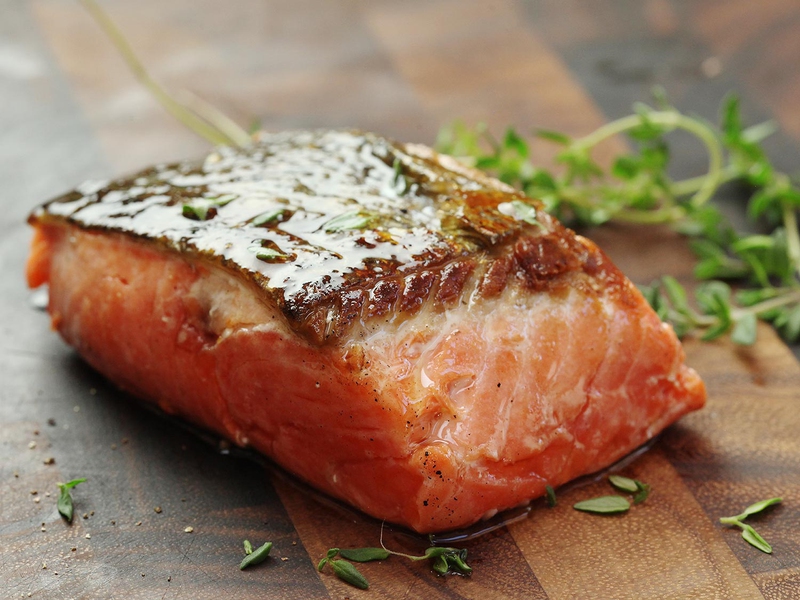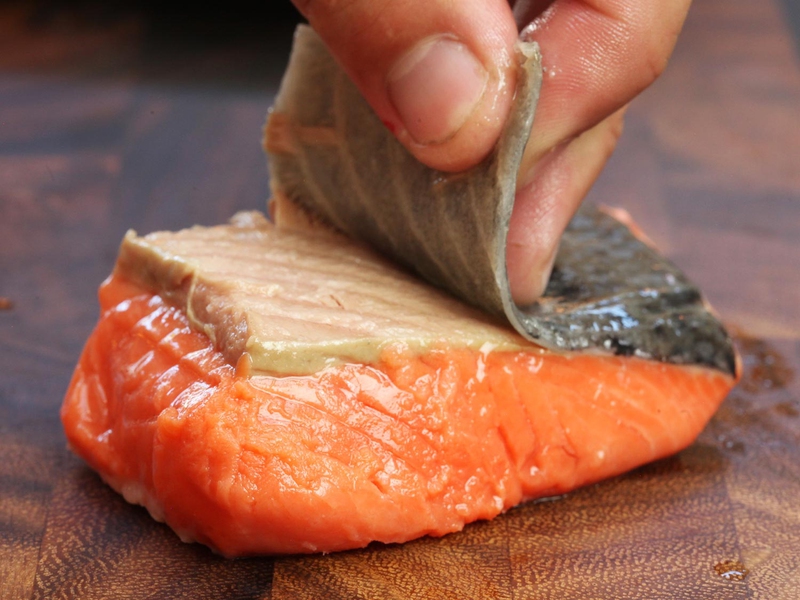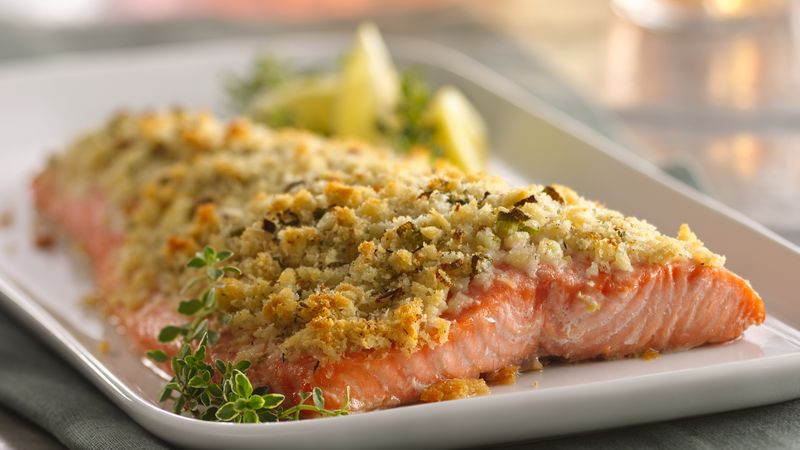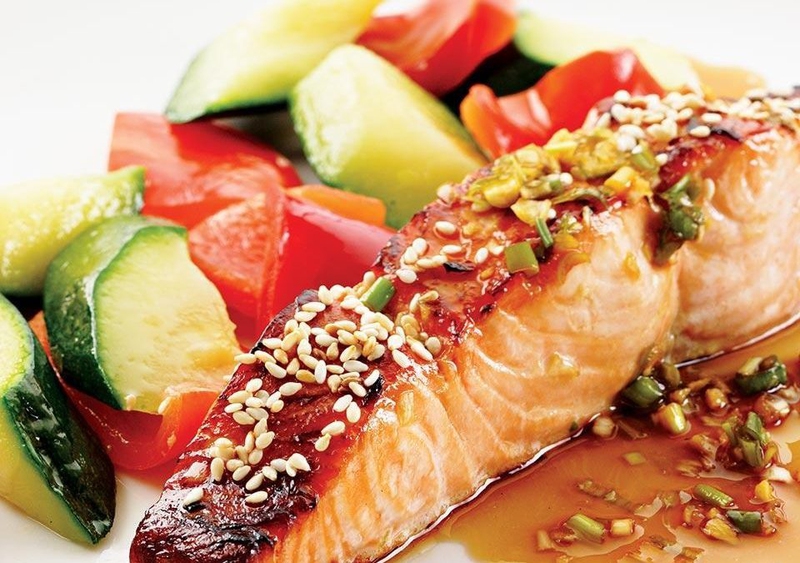If you ever list up the healthiest food for heart and brain, salmon can easily top the chart. Salmon fish is the best source of protein and omega 3s with its two main components DHA, EPA (exceptionally good for eyes, brain and nerves). Our body can’t produce these omega 3 fatty acids on its own. To fulfill the requirement, salmon fish is the healthiest source. To get the most out of it, you have to follow the healthiest way to cook salmon.

Health Benefits of Eating Salmon
Filled with numerous nutrients and vitamins, salmon has many other health benefits including:
Good for heart health and prevention of cancer
It increases metabolic rate and proves helpful in losing weight.
Salmon is a proven cure against inflammation, and that ultimately saves you from a number of chronic diseases like cancer, diabetes and heart-related issues.
It balances cholesterol level.
Improves the functioning of veins and arteries.
It strengthens cardiovascular tissues and muscles.
Both DHA and EPA are known to raise the level of serotonin (feel good hormone).
Some suggest it good for Parkinson and Alzheimer diseases (good for overall functioning of brain).
What’s the Healthiest Way to Cook Salmon?
Salmon is a firm and sturdier fish that contains a moderate quantity of fats. Being naturally enriched with oil, cooking it does not require a large quantity of other oils and butter (like we normally use in making other dishes). It can be cooked perfectly in its own fat.
It’s also important to cook on medium heat. If overcooked, it will easily lose its nutrients (and taste) and its surface would start showing a soft, white substance, known as albumin, which a protein, released from its muscle fibers. Secondly, an overcooked salmon might develop some free radicals that may prove damaging for health.
To get the best nutrient value of salmon, we need to find a quick cooking method that keeps the fish tender and moist. Broiling, grilling, roasting and baking are the most recommended ways to dry heat it. All of these methods ensure a short preparation time, without any loss of essential nutrients. Secondly, using no additional oils (dry method does not require that), makes it a less-fatty food, particularly for the people who are on diet or the ones conscious about their cholesterol level and heart health. That’s why picking one of these ways to cook salmon is highly recommended
Note: The American Heart Association has approved baking and grilling as healthier options over frying and other cooking methods.
Pick the Best Salmon
Whatever method of cooking you are going to try, prefer to have wild salmon instead of the farmed one. Wild salmon not only tastes great but it is more enriched with minerals and vitamins. And above all, it contains less calories and fats.
Pros and Cons of Other Cooking Methods
Smoked Salmon
Smoked salmon comes with the same health benefits as we observe in other dried methods. But its cons include the risks of high intake of sodium and stomach cancer (excessive intake of smoked foods may cause cancer). Besides that, smoking the fish requires a low temperature, which aids the harmful bacteria in surviving. And it may result in food poisoning especially in the people with weak immunity, aged people and pregnant women.
Fried Fish
Frying omega-rich fish directly affects the quantity of omega 3s. Furthermore, frying makes it more fatty and that may cause health risks including weight gain. Still if you want to fry, prefer pan frying (with olive oil) over deep frying.
Poached Salmon
Poaching too among the healthiest way to cook salmon. It’s the simplest and lightest way of making salmon. Salmon, when poached, promises a creamy texture. It is considered ideal for using in summer. You have to be extra careful while poaching salmon as it is quite likely to get overcooked.
Steamed Salmon
Steaming salmon not only keeps the fish moist and protects its nutrients, it also requires no oils for cooking. However, some people may not like the comparatively bland taste.
Note: People eat salmon with or without its skin. Many prefer to remove the skin to avoid any possible risks of contaminants like dioxins and PCBs.
Some Most Tasty Recipes of Salmon
Baked Salmon with Parmesan and Parsley Crust
Ingredients:
Skinned Salmon fillets—6 x 150g/5oz
Salt and black pepper
Cream cheese—150g/6oz
Crushed garlic clove/small
White breadcrumbs—25g/1oz
Grated rind of lemon—1/2
Grated parmesan-- 25g/1oz
Paprika
Fresh parsley—2tbsp.
How to Make
Firstly, your oven should be pre-heated to 200C/400F/Gas 6.
Prepare a mixture with cream cheese, salt, pepper, lemon rind and garlic.
Season each salmon fillet from both sides with this paste and place the pieces on roasting tin or greased baking sheet.
Now combine parsley, parmesan and breadcrumbs and add it on the fillet tops.
In the end, sprinkle on it some paprika and bake it for about 15 minutes. When salmon’s look is changed from translucent to opaque pink, that means it is cooked.
Broiled Salmon with Soy and Honey
Ingredients:
Low sodium soy sauce—1/2 cup
Honey 1/2 cup
Rice wine vinegar—tbsp.
Minced ginger—1tbsp.
Salmon fillet—4
Minced garlic cloves—2
Toasted sesame seeds for garnishing—2tbsp.
Lemon juice—1tbsp.
How to make it
Firstly, prepare a mixture by adding ginger, garlic, lemon juice, soy sauce, honey and vinegar in a bowel. Whisk them well.
Now put the fillets in a plastic bag and add 2/3 of the prepared mixture in it. Seal the bag and place it in the refrigerator for about 15 to 30 minutes to marinade.
Take an oven-proof skillet and put the salmon in it. Switch on the broiler to high.
As broiler turns hot, keep the skillet under it, with a distance of about 5 inches. Distance is important to get complete benefits of broiling, the healthiest way to cook salmon.
Let it cook for 5 to 6 minutes.
Now season the cooked fillets with the remaining marinade mixture. Sprinkle it with sesame seeds. It’s ready to serve.



View All Comments /Add Comment